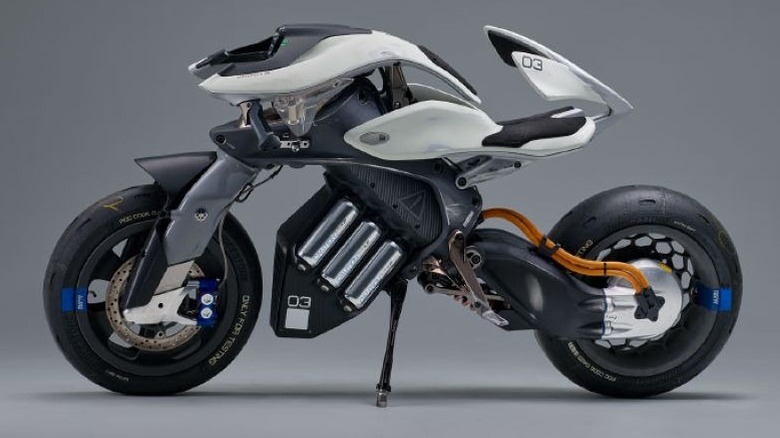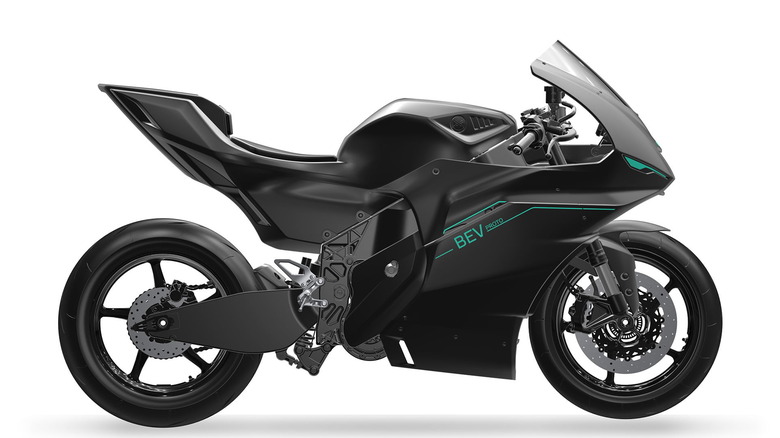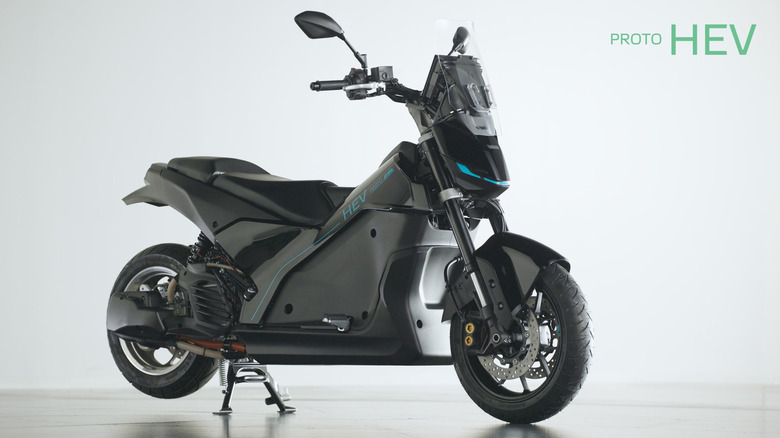5 Of The Wildest Motorcycle Concepts Yamaha Showed Us This Year
Springing from humble beginnings in 1887 as a producer of reed organs, Japanese multinational Yamaha has come to make a very wide variety of products, from musical instruments to motorcycles.
Operating at the intersection of engineering, creativity, and design, Yamaha Motor Company was founded in 1955 to challenge Honda's dominance in the post-war era. From its headquarters in Shizuoka, Japan, the company's multidisciplinary expertise has made it a worldwide leader in motorcycles, among other things. Part of this is due to its willingness to experiment and push technology forward, and it worked. Today, Yamaha Motor Company stands on decades of development, impressive accolades, and an innovative attitude to support its success.
Yamaha unveiled its vision for the future at the 2025 Japan Mobility Show in Tokyo. Some of its entries in the show transcend the concept of a motorcycle. We chose five motorcycle concepts from Yamaha and found in them a hint at Yamaha's view of itself and the future.
Motoroid: Λ
You know you're getting into conceptual territory when the branding abandons the Latin alphabet. That symbol after Motoroid is the lambda. Yamaha launched its Motoroid project in 2017 to "explore new possibilities for human-machine relationships." The mission statement alone qualifies any Motoroid product for a list of wild concepts, and the Lambda is Yamaha's latest effort in that vein.
After the 2017 proof-of-concept demonstrated a two-wheeled conveyance capable of standing on its own and interacting with its rider, the second generation arrived in 2023 with a machine that worked together with the rider as a partner. The third-generation Motoroid: Λ features machine-learning artificial intelligence to aid this concept.
If that wasn't "Tron" enough, the design defies conventional trends. At a glance, the sleek, silver prototype is barely recognizable as a motorcycle, marking how far outside the box Yamaha is thinking. However, that's what concepts are for — to conceptualize a potential future and build upon it. Given Yamaha's track record of engineering excellence, the Motoroid project evokes a sci-fi future we'd be interested in learning more about.
H2 Buddy Porter
The H2 Buddy Porter looks as friendly as its name implies. Its wide-open eyes, weather shelter, backrest, and storage space mark it as a proposed super commuter and megalopolis delivery machine. However, that's before the small print comes into view, and we realize Yamaha's aim is more interesting than we initially thought. The super corporation wouldn't settle for a super-efficient, state-of-the-art reimagining of a product every major motor scooter brand makes. The small print lettering on the side says "Hydrogen Engine."
It turns out that Yamaha's vision of a next-gen commuter scooter is also a potential bid to introduce hydrogen-powered motorcycles to the streets. The company collaborated with Toyota to design a scooter powered by a pair of hydrogen tanks, which provide a 60-mile range. The H2 Buddy Porter is also Euro 5 compliant, which means it meets emissions standards in some of the world's toughest states.
Intriguing power plant aside, the H2 Buddy Porter looks like a city dream. With a padded backrest integrated into a tall windshield via a canopy, it promises to shield its rider from all but the worst conditions on a stormy night. A built-in storage compartment looks form-fit for a case or two of hard luggage or a delivery service bag. Students, service personnel, delivery drivers, and residents of mega-cities may want to keep an eye on the H2 Buddy Porter.
Tricera
This one stretches the definition of a motorcycle, but with classic trikes long part of the culture, three-wheeled machines like the Polaris Slingshot and Can-Am Spyder are blurring the definition of motorcycling. It's interesting to see Yamaha's entry into the space.
The Tricera, as the name suggests, is a three-wheeled machine, but it picks up where others have left off. While the Slingshot and Spyder are ostensibly for thrill-seekers and cyclists, the Tricera is arguably more sedate. For starters, it eschews the ripping roar of internal combustion for electrical power, though details on performance remain hazy. It's just a concept, after all, but the days of electric power and low speeds going hand in hand are over. All that instant torque in a package like this could be gobs of fun.
Yamaha claims to have developed a three-wheeled steering system it hopes will promote its vision for the fusion of man and machine. While man-machine fusion sounds painful, Yamaha's cybernetic take on future transportation is fascinating to behold.
Proto BEV
Yamaha spent decades developing the world-beating YZF-R1, and it is not about to let that experience slip away just because powerplants are changing. Enter the Proto BEV, a blacked-out future bike that wouldn't be out of place whisking Batman around Gotham. The BEV is Yamaha's take on an electric future.
Major electric motorcycle brands have been cropping up as battery technology has improved, and legacy producers are even getting in on the action, like Harley-Davidson and its Livewire project. But Harley has never excelled Yamaha's most masterful skill: handling. With a legendary sports bike pedigree in its rearview, the Proto BEV has vast potential.
The limits of that potential have yet to be outlined. Yamaha's statement regarding the Proto BEV highlights how much fun a lightweight, compact machine can be without a large-capacity battery. Missing are the various efficiency, speed, and range specs so critical to serious buyers. Not that the Proto BEV is particularly serious. Yamaha refers to it as a working prototype, but it's interesting to see the brand pull back the curtain on the future of supersport design.
Proto HEV
The Proto HEV sounds awfully similar to Yamaha's Proto BEV, but the projects serve distinct segments. The commuter scooter looks something like a Honda Cub mated with a bat. Despite that ungainly combination, the mini-bike pulls off its design with the vaguely Tron-like design Yamaha employs to drum up a sci-fi vibe. For all its futuriusm, the Proto HEV gives pit-bike at the pod races vibe.
Powered by an unspecified combination of gasoline and battery, Yamaha lets Proto HEV riders choose between Serene and Spirited modes. One imagines that impacts performance and range in the usual ways, yet Yamaha still claims significant fuel savings to the tune of 35%, over what is not made precisely clear.
With the unveiling of these concept motorcycles, more details about the future will likely emerge. Each one points Yamaha's ambitions in differing directions, any one of which could conceivably be the next big thing – or just another forgotten dream.





